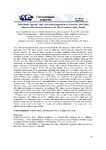Please use this identifier to cite or link to this item:
http://www.alice.cnptia.embrapa.br/alice/handle/doc/1060070Full metadata record
| DC Field | Value | Language |
|---|---|---|
| dc.contributor.author | SOUZA, J. F. de | pt_BR |
| dc.contributor.author | NASCIMENTO, A. M. de S. | pt_BR |
| dc.contributor.author | COSTA, A. O. | pt_BR |
| dc.contributor.author | SANTOS, S. de F. | pt_BR |
| dc.contributor.author | DUTRA, M. da C. P. | pt_BR |
| dc.contributor.author | PEREIRA, G. E. | pt_BR |
| dc.date.accessioned | 2017-01-05T11:11:11Z | pt_BR |
| dc.date.available | 2017-01-05T11:11:11Z | pt_BR |
| dc.date.created | 2017-01-05 | pt_BR |
| dc.date.issued | 2016 | pt_BR |
| dc.identifier.citation | IN: INTERNATIONAL SYMPOSIUM ON TROPICAL WINES, 5., 2016, Petrolina, PE. Book of abstracts...Petrolina, PE: Embrapa Semiárido, p. 65, 19 a 21 outubro, 2016. | pt_BR |
| dc.identifier.uri | http://www.alice.cnptia.embrapa.br/alice/handle/doc/1060070 | pt_BR |
| dc.description | One of the most produced and consumed wine from the São Francisco Valley (SFV) is the Muscat sparkling wines. The main varieties used are Italia and Canelli Muscats. Nazareno and Giallo muscat varieties are used in many regions to produce sparkling wines, presenting typical characteristics. In order to evaluate the adaptation potential of these two varieties to the VSF in the Northeast of Brazil, this work aimed to elaborate fine white dry wines by using both cultivars, and the effect of light and temperature on wine stability. Vines were planted in a partner winery in 2014 in Casa Nova city, Bahia state, Brazil. After harvested in March 2016, grapes were sent to Enology Laboratory of Embrapa in Petrolina, and wines were elaborated by traditional method of white grape vinification (Giovannini and Manfroi, 2009). After alcoholic fermentation at 18ºC±2, wines were corrected for 40 mg L-1 of free SO2 and then bottled. Bottles were placed in a box with controlled environment (35ºC temperature and light with length wave at 280nm), and wines were evaluated 6 days after (Garcia-Falcon et al., 2007). | pt_BR |
| dc.language.iso | eng | eng |
| dc.rights | openAccess | eng |
| dc.subject | Vinho branco | pt_BR |
| dc.subject | Vinho Muscat | pt_BR |
| dc.subject | Vale do São Francisco | pt_BR |
| dc.subject | Brasil | pt_BR |
| dc.title | Antioxidant capacity, color and total polyphenols in Nazareno and Giallo Muscat white wines produced in the São Francisco Valley, Brazil. | pt_BR |
| dc.type | Resumo em anais e proceedings | pt_BR |
| dc.date.updated | 2019-03-08T11:11:11Z | pt_BR |
| dc.subject.thesagro | Vinho | pt_BR |
| riaa.ainfo.id | 1060070 | pt_BR |
| riaa.ainfo.lastupdate | 2019-03-08 -03:00:00 | pt_BR |
| dc.contributor.institution | Joyce Fagundes de Souza, Enology Laboratory, University of Bahia State, Juazeiro, BA, Brazil; Antonio Mendes de Souza Nascimento, Enology Laboratory, University of Bahia State, Juazeiro, BA, Brazil; Ayrlan Oliveira Costa, Enology Laboratory, Embrapa Semi-arid, Petrolina, PE, Brazil; Sabrina de Freitas Santos, Enology Laboratory, University of Bahia State, Juazeiro, BA, Brazil; Maria da Conceição Prudêncio Dutra, Enology Laboratory, University of Bahia State, Juazeiro, BA, Brazil; GIULIANO ELIAS PEREIRA, CNPUV. | pt_BR |
| Appears in Collections: | Resumo em anais de congresso (CNPUV)  | |
Files in This Item:
| File | Description | Size | Format | |
|---|---|---|---|---|
| Giulianop65BookofAbstractsISTW2016.pdf | 137 kB | Adobe PDF |  View/Open |









